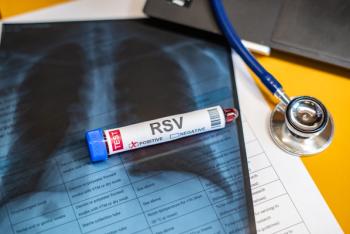
Persistent Barriers Keep Oral HIV PrEP Out of Reach for High-Risk Groups
Key Takeaways
- Cost and insurance coverage issues significantly hinder PrEP uptake, especially among those with delayed or non-pickup of prescriptions.
- Transgender individuals face lower PrEP adoption rates compared to cisgender populations, with significant regional and age-related disparities.
Posters presented at AMCP Nexus 2025 found especially low oral HIV PrEP uptake among transgender individuals and those facing insurance challenges.
Oral
Barriers to Oral HIV PrEP Adoption Nationwide
The first
Building on these findings, investigators conducted a cross-sectional survey to identify pharmacy-level barriers to initial PrEP dispensation. They invited adults with a recent (≤ 7 months prior) initial PrEP prescription and no prior record of HIV medications to complete a 35-question digital survey between March and December 2024. Questions addressed patient attitudes toward PrEP, out-of-pocket costs, and reasons for prescription fill rejections.
Using t-tests and chi-square/Fisher’s exact tests (P ≤ .05), the researchers compared responses between individuals who picked up their first PrEP prescription within 14 days (prompt pickup [PP]) and those who did not (delayed/no pickup [D/NP]). Univariable and multivariable logistic regression analyses assessed the predictors of pickup status.
Of the 39,596 individuals invited to complete the survey, 773 responded. Among respondents, 80.9% were in the PP group, and 19.1% were in the D/NP group. Groups were similar in demographics, except for out-of-pocket costs. In the D/NP group, 46.6% paid $0 for PrEP, and 46.6% had no cost data, primarily because they never picked up their prescription. In comparison, 83.5% of the PP group paid $0 for PrEP, while 1.6% had no cost data.
The D/NP group was significantly associated with using Medicare (OR, 0.46; 95% CI, 0.26-0.84) or cash/other payment (OR, 0.45; 95% CI, 0.27-0.77) vs commercial insurance. It was also more likely to report insurance processing issues (OR, 0.21; 95% CI, 0.14-0.32), consider out-of-pocket costs an important factor (OR, 0.46; 95% CI, 0.20-0.93), and have difficulty paying out-of-pocket costs (OR, 0.4; 95% CI, 0.27-0.59).
Additionally, the D/NP group was more likely to report recent job or income instability (OR, 0.63; 95% CI, 0.40-0.99), as well as challenges with housing, transportation, and acquiring basic necessities. Conversely, the PP group was significantly associated with being able to meet monthly expenses (OR, 1.82; 95% CI, 1.23-2.69) and not incurring higher-than-expected out-of-pocket costs (OR, 1.86; 95% CI, 1.17-2.96). No strong associations were observed between pickup status and PrEP-related attitudes, stigma, or self-efficacy.
“Cost concerns and insurance coverage issues were significantly more prevalent among individuals with D/NP vs PP of their first PrEP prescription,” the authors concluded. “Efforts to further encourage PrEP initiation by improving access should target expanding formulary coverage and streamlining pharmacy claims adjudication.”
Gaps in PrEP Adoption Among Transgender vs Cisgender Populations
While the first poster explored barriers in the general US population to initial HIV PrEP adoption, the
Scott M. Myers, MBA, the study’s author, noted that transgender populations face distinct health challenges but remain understudied in national datasets. To address this gap, he analyzed PrEP adoption trends among transgender vs cisgender populations using the Mariner170 all-payer national claims database.
The transgender cohort included 71,741 individuals with at least 1 claim for gender identity disorder between January 2010 and April 2023. Eligible patients were active in the dataset for at least 2 years, aged 16 or older at first appearance, and had no history of HIV diagnosis. PrEP adoption was defined as 1 or more prescription claims for cabotegravir or emtricitabine/tenofovir alafenamide.
Using t-tests and chi-square analyses across 32 comorbidities, Myers compared transgender and cisgender cohorts with propensity score matching. Patients were required to have at least 2 outpatient claims or 1 inpatient claim to be categorized for each comorbidity.
Compared with the cisgender cohort, HIV had the highest relative risk (11.3) in the transgender cohort, followed by behavioral health diagnoses such as self-inflicted injury (6.7), schizophrenia (4.0), mood disorders (3.0), depression (2.8), and anxiety disorders (2.46).
Additionally, only 5.2% of transgender patients had 1 or more PrEP claims (n = 3567/68,725). Myers noted that this was significantly lower than the
Age and region were significant predictors of adoption.2 Transgender individuals aged 16 to 24 had lower PrEP adoption rates (range, 1%-10%) than those aged 25 to 49 (range, 6%-26%).2 Geographically, PrEP adoption was highest in the Northeast (33%), followed by the South (24%), Midwest (21%), and West (20%). Myers noted that further study is needed to identify policy and public health factors contributing to regional differences.
“Rates of PrEP adoption among transgender individuals in the US remain significantly lower than those seen in other high-risk populations,” Myers said in an exclusive statement to The American Journal of Managed Care®. “This disparity highlights the urgent need to address the systemic and social barriers that hinder PrEP uptake among transgender patients.”
References
- Coaquira Castro J, Patel K, Lam J, et al. Barriers to oral HIV pre-exposure prophylaxis (PrEP) perceived by those receiving an initial prescription: US survey analysis. Presented at: AMCP Nexus; October 27-30, 2025; National Harbor, Maryland.
- Myers SM. Comparative outcomes for transgender patients: gaps in HIV pre-exposure prophylaxis (PrEP) adoption between transgender and cisgender individuals. Presented at: AMCP Nexus; October 27-30, 2025; National Harbor, Maryland.
- HIV risk, prevention, and testing behaviors among men who have sex with men. CDC. February 7, 2025. Accessed October 28, 2025.
https://www.cdc.gov/hiv-data/nhbs/hiv-risk-prevention-testing-msm.html
Newsletter
Stay ahead of policy, cost, and value—subscribe to AJMC for expert insights at the intersection of clinical care and health economics.













































